| Metal Whiskers
from Sn-Ag-Cu Alloy Systems |
The following images and technical information are
posted with permission of the authors:
"Tin
Whiskers with Special Morphology"
Yaowu
Shi and Hu Hao
haohu@emails.bjut.edu.cn
The Beijing
University
of Technology
July
2008
Rapid
tin whisker growth on the surface of Sn-3.8Ag-0.7Cu-1.0Ce/Er/Y*
solder joints has been investigated. The results show that,
besides the regular pencil-shaped whiskers, spiral tin whisker;
plate-like whisker; bent whiskers with many continuous kinks; tin
whisker with a non-constant cross section; branch-type tin whisker and
joining-type tin whisker were also found in our study. These tin
whiskers are shown as follows:
| * Sn = Tin |
Ag = Silver |
Cu = Copper |
| Ce = Cerium |
Er = Erbium |
Y = Yttrium |
1.
Spiral
tin whisker and distorted tin whisker
|
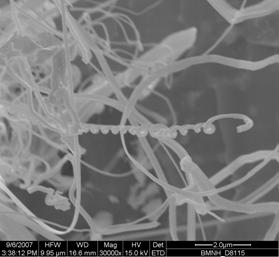
Storage
at room temperature in air for 720hr, on the surface of CeSn3
phase
|
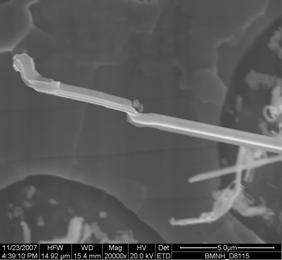
Storage
at room temperature in air for 820hr, on the surface of CeSn3
phase
|
2.
Irregular
plate-like tin whisker and regular ribbon-like tin whisker
|
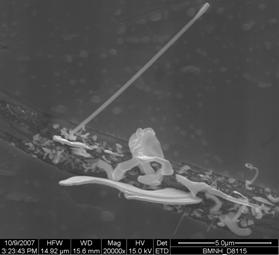
Storage at 125°C
in air for 20min, then at room temperature for 260hr, on the
surface of ErSn3 phase
|
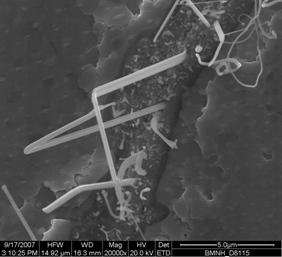
Storage
at 150°C
in air for 20min, on the surface of ErSn3 phase
|
3.
Tin
whiskers with non-constant cross section
|
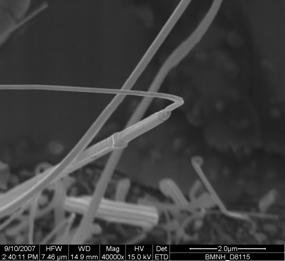
|
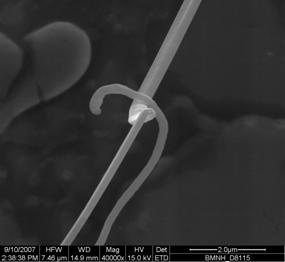
|
|
Storage
at 150°C in air for 20min, on
the surface of ErSn3 phase
|
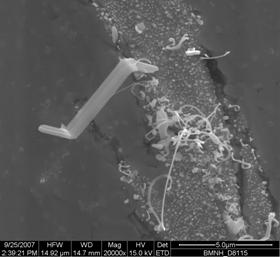
Storage at room temperature in air for 312hr, on
the surface of ErSn3 phase
4.
Branch-type
tin whiskers
|
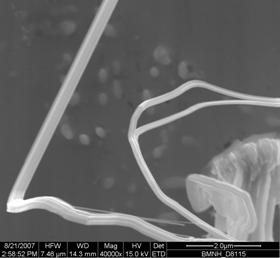
Storage at room temperature in air for 312hr, on
the surface of CeSn3 phase
|
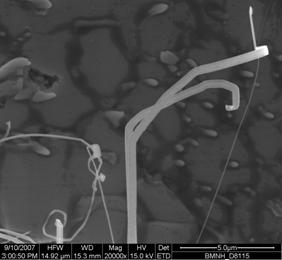
Storage
at 150°C in air for 20min, on the surface of ErSn3 phase
|
5.
Tin whisker
with a joint
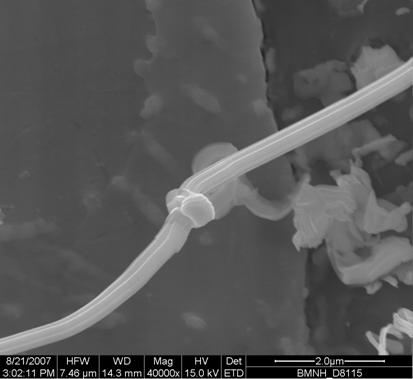
Storage at room temperature in air for 312hr, on
the surface of CeSn3 phase
|
|









